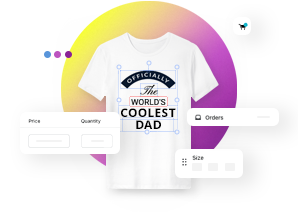On this page
How to increase user engagement in e-commerce?

As businesses strive to build relationships with their customers and increase customer loyalty, user engagement has become an important factor in the success of any e-commerce venture. To effectively engage with users, companies must find new techniques that would extend the shopping experience just a bit longer. Let’s look at what those tactics are about today.
The Power of Personalization
User engagement is the key to success for e-commerce businesses. With so many different companies vying for customers’ attention, it’s important for businesses to find ways to stand out and make their shopping experiences more enjoyable. This is where personalization can be a powerful tool.
Personalization is about leveraging user data to provide a tailored shopping experience. By encouraging customers to create profiles, businesses can display content based on user behavior, location, or past interactions. Additionally, personalized emails and content can be designed to match customer interests. For example, a customer who recently purchased running shoes from an e-commerce store might receive an email offering discounts on additional items related to running such as socks or energy bars.
Personalization also allows customers to customize their shopping experience by creating user profiles. With this information, businesses can recommend products that are more likely to meet the needs of each individual customer. For example, if a customer frequently searches for outdoor apparel on an e-commerce site, they may be presented with personalized product recommendations when they log in or visit the website again in the future.
By utilizing personalization strategies such as these, e-commerce businesses can increase user engagement and drive sales. Personalized emails and content will help keep customers engaged by providing relevant recommendations and offers that meet their specific needs in real time - all while making their shopping experience more efficient and enjoyable than ever before!
Enhancing the Mobile Experience
The mobile revolution has transformed the way we shop, and e-commerce companies need to take advantage of this technology to boost user engagement. Adapting a responsive design will make it easier for customers to explore and purchase products on their phones. Incorporating convenient navigation and menus also helps create an easy-to-use interface that lets users access what they want quickly.
Having a mobile app can be very useful too; features like push notifications and discounts keep people coming back. But having an app doesn't mean sacrificing speed either; optimizing images and reducing scripts helps ensure fast loading times even with slower connections. To guarantee your website or app looks great no matter what device the customer is using, you should test it on different devices and browsers.
By implementing these strategies when creating or updating their e-commerce websites or apps, businesses are able to give customers a pleasant shopping experience without compromising speed or usability. This leads to increased user engagement, more sales, and ultimately happier customers who are likely to return in the future.
Gamification Techniques
This section will explore how e-commerce businesses can increase user engagement by leveraging gamification techniques. Gamified experiences are becoming increasingly popular in the e-commerce space, as they create a more enjoyable shopping experience for customers. By incorporating these strategies into their business, businesses can drive sales and create an engaging environment for their customers.
-
One way to increase user engagement is by providing rewards for customer engagement. This could include loyalty points or badges that customers can earn for activities such as making purchases, writing product reviews, or referring friends. These incentives can encourage users to keep coming back and drive sales for the business.
-
Another way to increase user engagement is by creating interactive quizzes and surveys to help users find the perfect product. These quizzes could include questions about a customer’s style, budget, and lifestyle to determine which products would be best suited for them. Additionally, businesses can implement flash sales and countdown timers to generate excitement around certain products and create a sense of urgency among shoppers. Finally, virtual currency can also be integrated into the shopping experience to reward loyal customers with discounts or free shipping on certain items.
By utilizing gamification techniques such as providing rewards, creating interactive quizzes and surveys, implementing flash sales and countdown timers, and incorporating virtual currency into the shopping experience, e-commerce businesses can create a more enjoyable shopping experience for their customers and drive sales at the same time.
Leveraging User-Generated Content (UGC)
Leveraging user-generated content is a powerful tool for e-commerce businesses to engage with customers and create a more personalized shopping experience. UGC includes customer photos, reviews, ratings, and community forums that can be used to increase user engagement and drive sales.
One of the best ways to leverage UGC is by incorporating customer photos into product pages. Seeing how the product looks on real people helps potential customers make an informed purchase decision. It also provides existing customers with an incentive to share their purchases with others.
Reviews are another effective form of UGC that can provide valuable social proof for prospective buyers and give businesses feedback from existing customers. These reviews can help sway purchase decisions while providing valuable insights about products or services that could be used by businesses in the future.
Including community forums in your website or store is also a great way to leverage UGC. They offer users an opportunity to ask questions about products or services before committing and interact with other customers who have already purchased from you. Community forums are also useful for gathering feedback from existing customers which can then be used by businesses in order to improve their services in the future.
By leveraging UGC through photos, reviews, ratings, and community forums, e-commerce businesses will create a more personalized shopping experience for their customers as well as encourage them to engage with their products more deeply. This ultimately leads to increased sales and creates a better overall shopping experience for both buyers and sellers alike!
Implementing Interactive Tools
Nothing new in this field, interactive tools still bring results to businesses trying to increase user engagement and drive sales. By integrating customer feedback surveys, allowing customers to design and customize products, creating tutorials and demos, leveraging augmented reality (AR) capabilities, and utilizing chatbots and virtual assistants - businesses can create an engaging shopping experience that will keep customers coming back for more. These tools provide customers with a personalized experience that helps build trust between them and the business resulting in higher customer satisfaction ratings as well as increased sales.
Streamlining the Checkout Process
Streamlining the checkout process is essential for e-commerce businesses wanting to increase user engagement. With consumers now expecting a seamless, intuitive buying experience, reducing friction in the checkout process is key to building customer loyalty and driving conversions.
One way to streamline the checkout process is by offering one-click purchases. This allows customers to make purchases with just one click of the mouse or tap of their finger, without having to fill out multiple forms or enter payment information. By eliminating tedious steps in the buying process, you can encourage customers to shop with you again and save them time and effort.
Offering multiple payment options is also an effective way of streamlining the checkout process and increasing user engagement. Providing customers with multiple payment methods not only makes it easier for them to pay but also helps build trust between them and your business. Customers will appreciate having more options when it comes to paying for their purchases, so make sure you offer at least two or three different payment methods such as credit cards, PayPal, Apple Pay, Google Pay, etc.
Allowing customers to save their shipping information can also help reduce friction in the purchasing process and improve user engagement. Not only does this save customers time but it will also provide them with a more personalized experience as they won’t have to re-enter their address every time they make a purchase from your website or app.
Making sure that your checkout form is mobile-friendly is important if you want users on mobile devices to be able to shop easily from your website or app. Your forms should be easy to use even on smaller screens and provide an optimal shopping experience regardless of what device they are using.
Finally, providing clear error messages when customers input incorrect information can help reduce frustration during the checkout process and encourage them to complete their transactions successfully. Make sure that any errors are clearly indicated so that customers don’t have to guess what went wrong and how they can fix it - this will ensure a smoother shopping experience overall which leads to higher customer satisfaction ratings and increased sales for your business.
Engaging Content Beyond Products
Creating engaging content beyond products is a great way for e-commerce businesses to increase user engagement. This type of content can educate customers about the product offerings, promote customer-centric topics to encourage loyalty and provide interactive elements such as polls, quizzes, and surveys. It can also help humanize the brand by showcasing the people behind it and the process that goes into creating or delivering products.
One effective strategy for creating engaging content beyond products is to create educational content such as tutorials and demos that explain how specific features work or how they benefit customers. This type of content can be in the form of videos, podcasts, blog posts, or infographics that provide helpful information about a product offering. Having this kind of educational material available on an e-commerce website can help customers make informed decisions when making a purchase while also helping them build trust in the brand.
In addition to educational content, e-commerce businesses should also consider creating customer-centric content that encourages loyalty. This could include stories from happy customers who have used their product or service as well as highlighting employees’ experiences with products or services offered by the business. These types of stories will be more relatable than generic marketing messages and will help foster a sense of connection with potential buyers that may lead to sales in the future.
Interactive elements such as polls, quizzes, surveys and games are another way for companies to engage with their audience and encourage them to stay on their website longer while also increasing user engagement levels. Not only do these strategies add an element of fun but they also enable brands to capture valuable insights about their target market which can inform future marketing decisions. Furthermore, incorporating interactive elements into your website design can make it stand out from other competitors in your field which makes it more likely for customers to remember your business when considering making a purchase online.
Finally, e-commerce businesses should strive to humanize their brand by showcasing the people behind it and providing insights into what goes into creating or delivering products. Content like interviews with team members, and behind-the-scenes videos of production processes or delivery systems can give potential buyers an idea of what goes into making sure they get quality goods when they shop online with you - something not many other competitors offer! By sharing this kind of information in addition to showcasing customer stories through social media channels like Instagram and YouTube you can help create an emotional connection between you and your target market which will ultimately result in higher user engagement levels and increased sales for your business!
Tags
You can add a conetnt on the right side bar.

